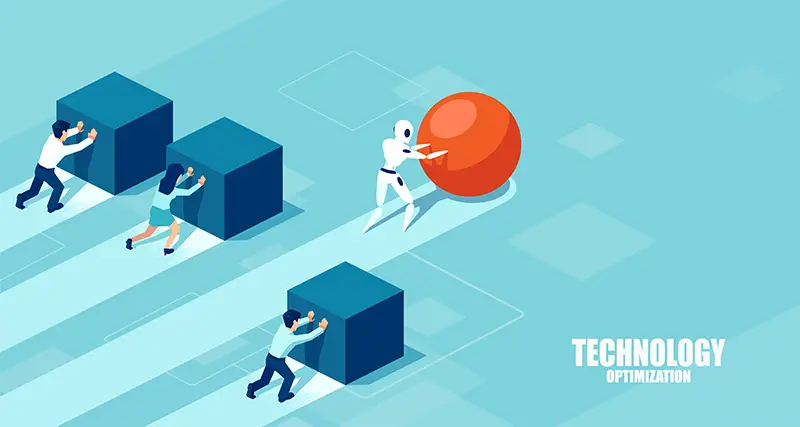Click here to get this post in PDF
It’s been a hard year for business, many companies have closed their doors, been forced to downsize or cut way back on spending. But during the great recession just ten years ago, we saw companies like Instagram, Pinterest, AirBNB, and Slack launched in the middle of dire uncertainty. In fact more than 40,000 tech companies got their start during those hard times. And the ones that survived owed some of their success to increased optimization and automation.
Using technology to help employees do jobs or tasks better is what automation is all about. When done correctly, it allows employees as well as CEO’s to do their jobs, better, quicker and with less. By implementing improved systems and processes, companies can continue to grow and improve even when times get tough.
Technology allows Managers to find ways to do jobs more effectively. Smart managers use technology to grow businesses and rapidly grow out their customer base. When managers use automation correctly and in the proper context, a company can see strong year over year growth even when there are headwinds in the broader economic arena. It’s times like this where automation can save the day and build a stronger bottom line.
A few of the different types of automation that we see in times like this include DevOps, Workplace, and Logistics automation:
Logistics automation is the use of technology to help design better supply chain systems or better use of enterprise resource models to facilitate better distribution either in house or globally. Essentially getting the right thing, to the right place, at the right time.
Workplace Automation is basically looking at every business process and understanding how it might be automated or helped by automation. It’s a broad term that applies across all departments. Impacting customer service, to design to HR. And it’s constantly evolving as technology does. Think of the decision of many fast food companies recently to use automated Alexa type assistants in their drive through lanes to improve wait times and customer service.
Devops Automation is, as the name implies, the marrying together of the Development teams and the Operations teams. It’s used especially in software development where it’s meant to speed the release of apps or programs by intertwining these two departments in order for better communication and responsiveness.
A recent Devops success story is Adidas. When they first launched the Kayne West inspired Yeezy’s they were able to sell a couple thousand pairs in the first few seconds. Things went badly as the site went down. Adidas embraced the cloud, brought Developers and Operations together, revamped and retooled almost everything they did, and they’ve now cut a tortoise like 6 week development cycle down to one that can zip through as many as 5 new iterations a day. Speedier development means happier customers and increased opportunities.
Workplace Automation can be seen in companies like Ideal, which uses a virtual assistant to help with hiring processes. They claim they have helped some companies slash hiring costs by more than 70 percent and almost triple the number of pre-screened candidates eligible for interview. This cost-cutting and improvement of the applicant group are another way technology is helping many different businesses evolve.
DHL is using Logistics automation along with robotics to streamline their operations. Whether it’s using AI to determine if a given flight is on time to better spread workloads, using more than 500 robots to replace more than 500 FTE’s per year, or deploying 150 plus bots/apps to reduce time-consuming tasks, they are making changes which leave a more nimble and competitive company in its wake.
Unfortunately automation can bring push back. Many fear losing their jobs to new technology. So it’s important that we calm everyone’s fears and start with some basic steps:
First, start with the low-lying fruit. Take the simplest tasks and start there. Early progress on these will help encourage a bit more risk taking as you move on. If people can see that the change is for the best and that good things are possible, you’ve already won the most important battle.
Second, be upfront about what you hope to accomplish. You will need buy-in from all levels and every department if you hope to make big lasting changes. You will want to show that jobs lost to automation are resulting in better, more interesting opportunities in the company. And don’t forget to show how increased savings can be put to better use building new revenue or better products.
Third, as your automation journey continues, you’ll want to step back and think about the bigger picture. Not just simple tasks that can be done better with automation, but whole processes and functions that can be done better with technology. And don’t stop with what technology is here today. Look out at the horizon a little and see if some new technology may be coming soon that you can put to use once it gets here.
In these trying times, we all want a competitive advantage, and automation in its many shapes and sizes can often give us a leaner, more nimble, and better thought out business. Deploying these processes can leave you better prepared to face the next big disaster, whatever the future might throw at us.
You may also like: Automation In Small Businesses
Image source: stock.adobe.com

